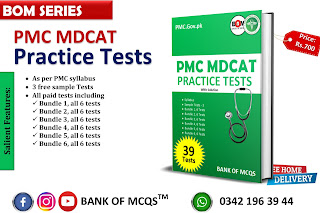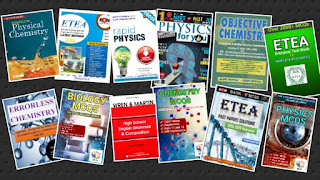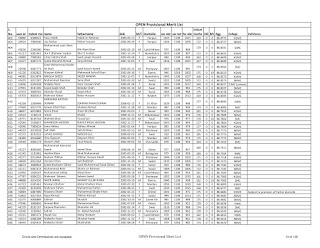Chap.17 Nervous coordination MCQs
|
1. |
|
|
|
2. |
Those
parts of the body that receive stimuli from external or internal environment
are (a)
Receptors (b) Transducer (c)
Effector (d) Both a and
b |
D |
|
3. |
Mechanoreceptors
which detects touch is: (a)
Meissner Corpuscle (b)
Pacinian Corpuscle (c)
Free nerve endings (d) All of them |
A |
|
4. |
Pain is detected by: (a)
Mechanoreceptors (b) Thermoreceptors (c)
Nociceptors (d)
Osmoreceptors |
C |
|
5. |
50% of nervous system consist of cells: (a)
Neurons (b) Nephrons (c)
Neuroglia (d) Soma |
C |
|
6. |
The main function of Schwann cell (neuroglia)
is to make? (a)
Nissl's Granule (b) Soma (C)
Axon (d) Myelin
Sheath |
D |
|
7. |
Chemically
myelin sheath is made up of: (a)
Proteins (b)
Carbohydrates (c)
Lipids (d) Both b
and c |
C |
|
8. |
A
wave of electrochemical change that travels along the length of neuron, from
one end to other: (a)
Reflex Arc (b)
Reflex Action (c)
Nerve Impulse (d) Influx (d)
More positive outer surface of neuron |
C |
|
9. |
membrane
than the inner surface, this state is referred as: (a)
Polarized state (b) Depolarized
state (c)
Repolarized state (d) None of them |
A |
|
10. |
The
concentration of potassium in the Nude inside the nerve cell to outside is
greater: (a)
10 Times (6) 20 Times (C)
30 Time (d) 40 Times |
A |
|
11. |
For
every two potassium ions that are actively transported inward number of
sodium ions pumped out: (a)1 (b) 2 (c)
3 (d) 4 |
C |
|
12. |
Any
qualitative or quantitative the environment detected by an organism is a: a)
Stimulus (b) Response (c)
Impulse (d) Effector |
B |
|
13. |
The
first organized central nervous system appears in:. (a)
Paramecium (b)
Sponge (c)
Hydra (d) Planarian |
D |
|
14. |
Thyroid
gland has the ability to store: (a)
lodine (b) Fluorine (c)
Chlorine (d) Phosphorus |
A |
|
15. |
In
which of the following arts of the brain the speech center is situated: (a)
Cerebellum (b) Hypothalamus (c)
Thalamus (d) Cerebrum |
D |
|
16. |
There
are distinct senses in humans (a)
5 (b) 7 (c)
9 (d) 11 |
A |
|
17. |
Cerebrum,
thalamus and hypothalamus are parts of: (a)
Fore Brain (b) Mid Brain (c)
Hind Brain (d) Spinal Cord |
A |
|
18. |
Which of the following is common to all neurons? (a)
A cell body which contains a nucleus (b)
A thick myelin sheath (c)
Presence of node of Ranvier (d)
Presence of Schwann cell |
A |
|
19. |
What
will occur if a drug at the neuromuscular junction blocks the receptor sites
on the post-synaptic membrane? (a)
Inhibition of acetylcholine release (b)
Muscle contraction (c)
Muscle paralysis (d)
Release of calcium ions |
A |
|
20. |
The groups of ribosomes present in the cell body
of the neuron, which are associated with rough endoplasmic reticulum are
called: (a)
Meissner's Corpuscles (b)
Pacinian Corpuscles (c)
Nissl's Granules (d)
Lysosome Granules |
C |
|
21. |
The mammalian forebrain is differentiated into
thalamus, limbic system and the (a)
Cerebellum (b) Cerebrum (c)
Hippocampus. d hypothalamus |
B |
|
22. |
Information back from the control center to the
effectors as done by nerve pathway (a)
Afferent (b) Efferent (0)
Both of these (d) None of these |
B |
|
23. |
The
number of human spinal nerves is: (a)
24 (b) 50 (c)
62 (d) 64 |
C |
|
24. |
The
electrical potential of cell membrane of neuron when it is not transmitting
any signal is called (a)
Resting Membrane Potential (b)
Action Potential (c)
Propagation of Impulse (d)
Synapse |
D |
|
25. |
Which
would occur if the parasympathetic system was stimulated? (a)
Increase in Blood Sugar (b)
Increase in Digestion (c)
Increase in Breathing Rate (d)
Increase in Adrenaline |
D |
|
26. |
A nerve is a: (a)
Collection of Neurons (b)
Concentration of Dendrites and Axons (c)
Bundles of Axons or Dendrites of Neurons (d)
Bundles of Axons or Dendrites Bounded by connective
tissue |
D |
|
27. |
Nociceptors
detect: (a)
Pressure (b) Temperature (c)
Pain (d)
Blood Pressure |
C |
|
28. |
The
photoreceptor in the human eye includes: (a)
Rod (h)
Cone (c)
Both of these d) None of these |
C |
|
29. |
A
non-myelinated part of axon between
two schwann cells is called: (a)
Myelin Sheath (b) Synapse (C)
Synaptic Cleft (d) Node of
Ranvier |
D |
|
30. |
Associative
neurons are (a)
Unipolar (b) Bipolar (c)
Multipolar (d) None of
these |
C |
|
31. |
The
pathway of nerve impulse during reflex action is called: (a)
Resting Potential (b) Action
Potential. (c) Reflex Are (d) Reticular Formation |
C |
|
32. |
Channels
in the neuron membrane which perform active transport are: (a)
Gates (b) Pumps (e)
Both of these (d) None of these |
B |
|
33. |
If
a stimulus is capable to bring an Electrochemical change on neuron or to
excite a given tissue, it is called: (a)
Sub-Threshold Stimulus (b)
Threshold Stimulus (C)
Spike Potential (d)
Inadequate Stimulus |
B |
|
34. |
The
conduction of action potential from node to node in jumping manner is called: (a)
Continuous impulse conduction (b)
Saltatory impulse conduction (c)
Resting membrane Potential (d)
None of these |
B |
|
35. |
Thick
neuron fibres conduct: (a)
Slow impulse (b)
Faster impulse (c)
No impulse (d)
Thickness has no Relation to impulse conduction |
B |
|
36. |
In
electrical synapses, the cells are separated by the synaptic cleft of only: (a)
0.2 nm (b) 20 nm (c)
200 nm (d) 2 nm |
A |
|
37. |
Which
one is an inhibitory neurotransmitter? (a)
Acetylcholine (b) Glutamate (c)
Both of these (d) None of these |
B |
|
38. |
The
enzyme monoamine oxidase catalyzes the hydrolysis of: (a)
Glutamate (b) Acetylcholine (c)
Adrenaline (d) All of these |
C |
|
39. |
Meninges
include: (a)
Dura mater (b) Arachnoid (c)
Pia Mater (d) All of
these |
D |
|
40. |
Which
one of the following is concerned with long term memory? a)
Amygdala (b) Hippocampus (c)
Hypothalamus. (d) Thalamus |
B |
|
41. |
It
is believed that Alzheimer's disease results from an increase in the
production or accumulation of a specific protein known as (a)
Nicotine (b)
Phenylalanine (c)
Beta Amyloid Protein (d)
Acetylcholine |
C |
|
42. |
Malignant tumor is: (a)
Cancerous (b) Non-Cancerous (c)
Both of these (d) None of these |
A |
|
43. |
Stroke
caused by a blood clot that blocks or plugs a blood vessel in the brain is
known as: (a)
Haemorrhagic Stroke (b)
Ischemic Stroke (c)
Meningitis (d)
Cephalalgia |
B |
|
44. |
Use
of alcohol reduces levels of: (a)
Serotonin (b) Dopamine (c)
Both of these (d) None of these |
C |
|
45. |
The
disease in which people imagine they are in a magical world and see enemies everywhere
is called: (a)
Dementia (b) Alzheimer's
Disease (c)
Paranoia (d) Epilepsy |
C |
|
46. |
Cannabis
is also known as: (a)
Marijuana (b) Heroine (c)
Hashish (d) None of
these |
A |
|
47. |
Heroine
is processed from: (a)
Nicotine (b) Morphine (c)
Cannabis (d) Alkaloids |
B |
|
48. |
A
sensation of tingling, pricking or numbness of the skin resulting from nerve
damage is called: (a)
Paranoia (b) Cephalalgia (c)
Paresthesi (d) Euphoria |
C |
|
49. |
Sense
of touch is called: (a)
Gestation (b) Tactition ©lfaction (d) Depression |
B |
|
50. |
Which
of the following lack taste buds?. (a)
Filiform Papillae (b) Fungi Form
Papillae (c)
Foliate Papillae (d) Circumvallate
Papillae |
A |
|
51. |
Which of the following events is not
associated with the sympathetic nervous system? (a)
Increase in Heartbeat (b)
Dilation of the Pupil (c)
Lowering of blood pressure (d)
Inhibition of peristalsis |
C |
|
52. |
Cranial nerve pairs number I, II and VIII
are functionally: (a)
Sensory (b) Motor (c)
Mixed (d) None of
these |
A |
|
53. |
The
collection of neuron cell bodies is called: (a)
Nerves (b) Tracts (c)
Ganglia (d) Plexus |
C |
|
54. |
Spinal cord has a length of about: (a)
0.8 inches (b) 8 inches (c)
18 inches (d) 81 inches |
C |
|
55. |
In
cross section, the spinal cord shows: (a)
An inner white matter and outer gray matter (b)
An inner gray matter and outer white matter (c)
Only gray matter (d)
Only white matter |
B |
|
56. |
Sodium
pump means: (a)
Expelling of Na into ECF and intake of K from cytoplasm against concentration
gradient (b)
Expelling of K into ECF and intake of Na from cytoplasm (c)
Only expelling of Na into ECF (d)
Only intake of K into cytoplasm. |
A |








Comments
Post a Comment